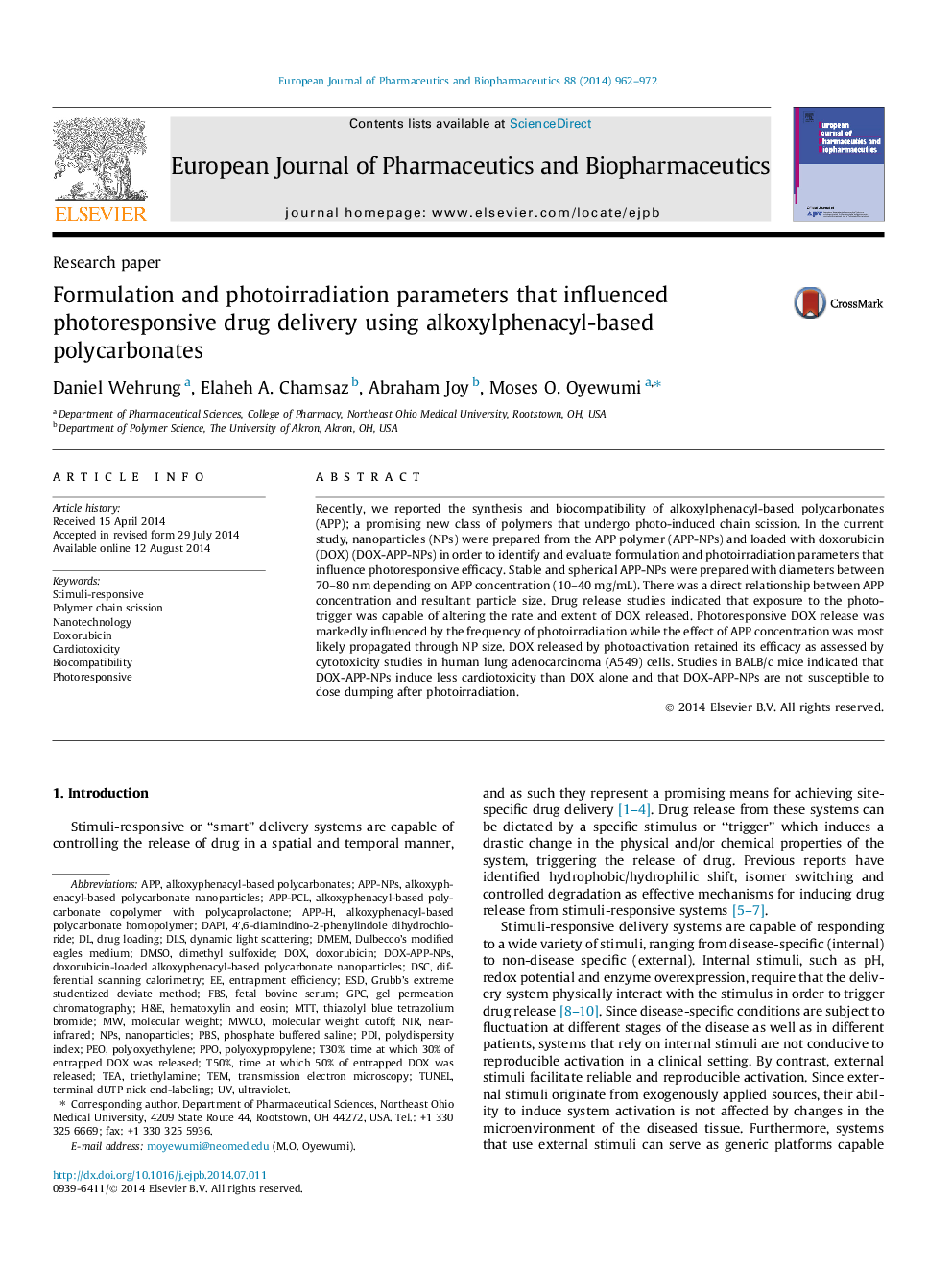| کد مقاله | کد نشریه | سال انتشار | مقاله انگلیسی | نسخه تمام متن |
|---|---|---|---|---|
| 2083534 | 1545337 | 2014 | 11 صفحه PDF | دانلود رایگان |
• Nanoparticles were prepared from alkoxylphenacyl-based polycarbonates (APP).
• We assessed photoresponsive delivery of doxorubicin (DOX) from APP nanoparticles.
• Specificity of light-responsive delivery increased with APP polymer concentration.
• Frequency of photoirradiation played critical roles in photo-induced DOX release.
• APP nanoparticles did not undergo photo-induced dumping of entrapped DOX.
Recently, we reported the synthesis and biocompatibility of alkoxylphenacyl-based polycarbonates (APP); a promising new class of polymers that undergo photo-induced chain scission. In the current study, nanoparticles (NPs) were prepared from the APP polymer (APP-NPs) and loaded with doxorubicin (DOX) (DOX-APP-NPs) in order to identify and evaluate formulation and photoirradiation parameters that influence photoresponsive efficacy. Stable and spherical APP-NPs were prepared with diameters between 70–80 nm depending on APP concentration (10–40 mg/mL). There was a direct relationship between APP concentration and resultant particle size. Drug release studies indicated that exposure to the photo-trigger was capable of altering the rate and extent of DOX released. Photoresponsive DOX release was markedly influenced by the frequency of photoirradiation while the effect of APP concentration was most likely propagated through NP size. DOX released by photoactivation retained its efficacy as assessed by cytotoxicity studies in human lung adenocarcinoma (A549) cells. Studies in BALB/c mice indicated that DOX-APP-NPs induce less cardiotoxicity than DOX alone and that DOX-APP-NPs are not susceptible to dose dumping after photoirradiation.
Figure optionsDownload high-quality image (64 K)Download as PowerPoint slide
Journal: European Journal of Pharmaceutics and Biopharmaceutics - Volume 88, Issue 3, November 2014, Pages 962–972
